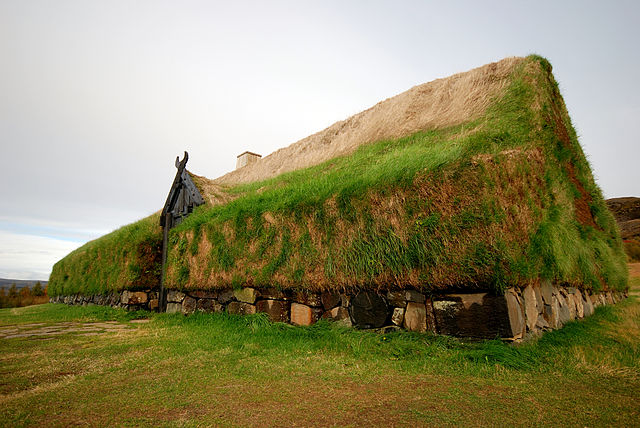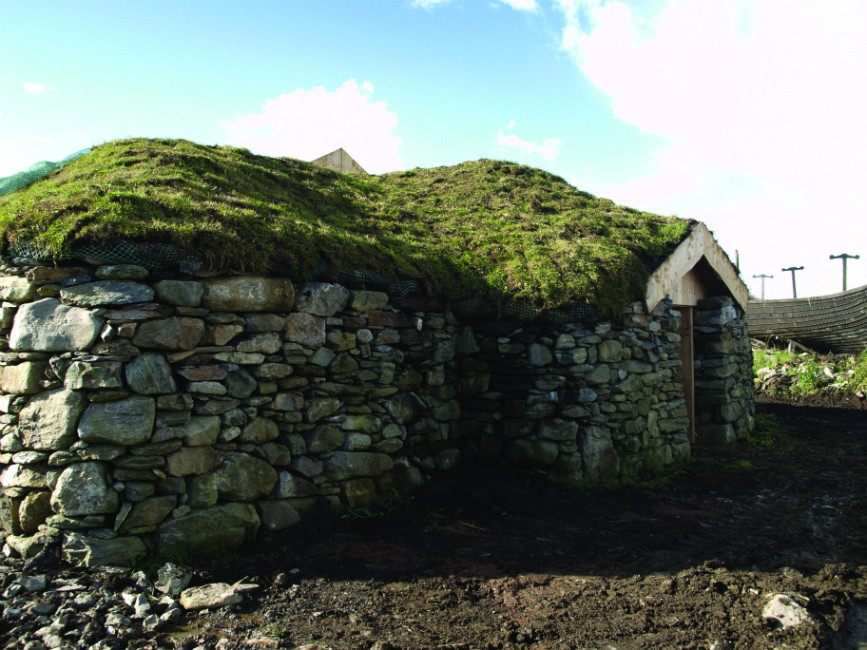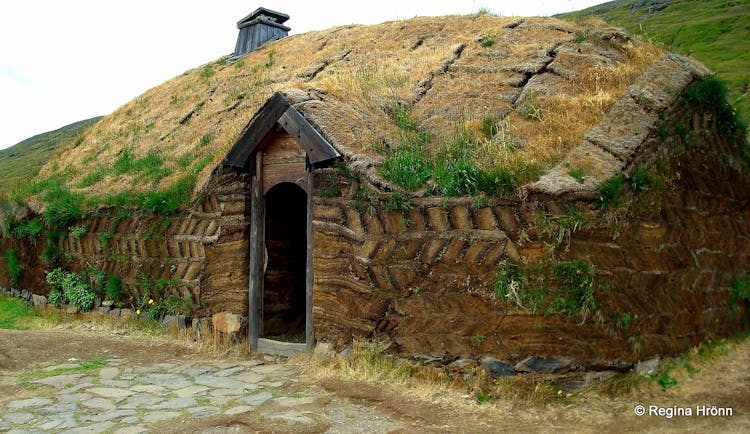Visiting the reconstruction longhouses, one gets the impression that they were warm, comfortable, cozy places.
That romantic view was shattered for me recently when an Icelandic acquaintance told me of his experiences as a child living in a 19thcentury turf house for a part of the summer each year. He said the house was damp and cold and miserable.
However, Viking-age turf houses (above at Stöng) and 19th century turf houses (right at Sænautasel) were very different in design and construction. One evolved from the other, but they shared little other than that their walls and roofs were both made of turf.
In many ways, the standard of living was considerably better in 10th century Iceland than in 19th century Iceland. Wood for fuel and for framing timbers was far more readily available in the 10th century, and so large rooms with high ceilings and long firepits in every room which warmed and dried the air were the rule. By the 19th century, rooms were small with low ceilings, and the heat for the entire house typically came from a single fire, usually fueled by animal dung.
Now that I have spent a night in both a Viking-age turf house reconstruction, and in a 19thcentury turf house, I can say that I much prefer the Viking-age house.
















